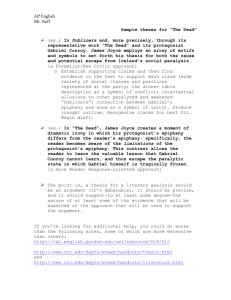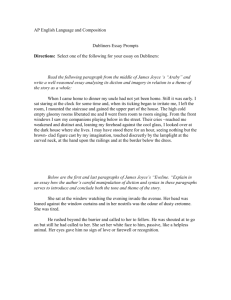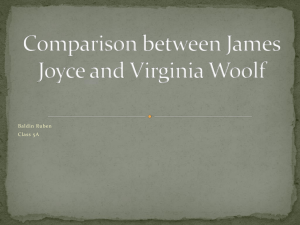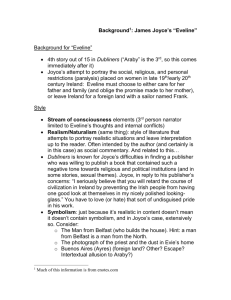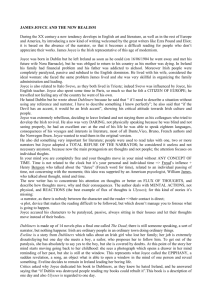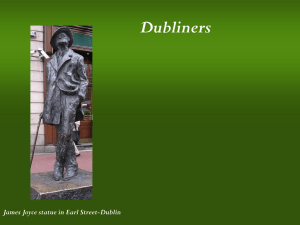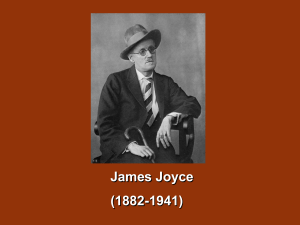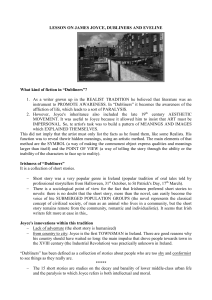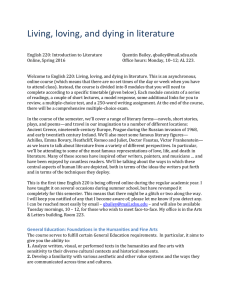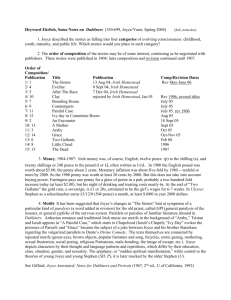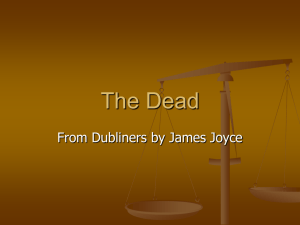“The Dead” from James Joyce's Dubliners
advertisement
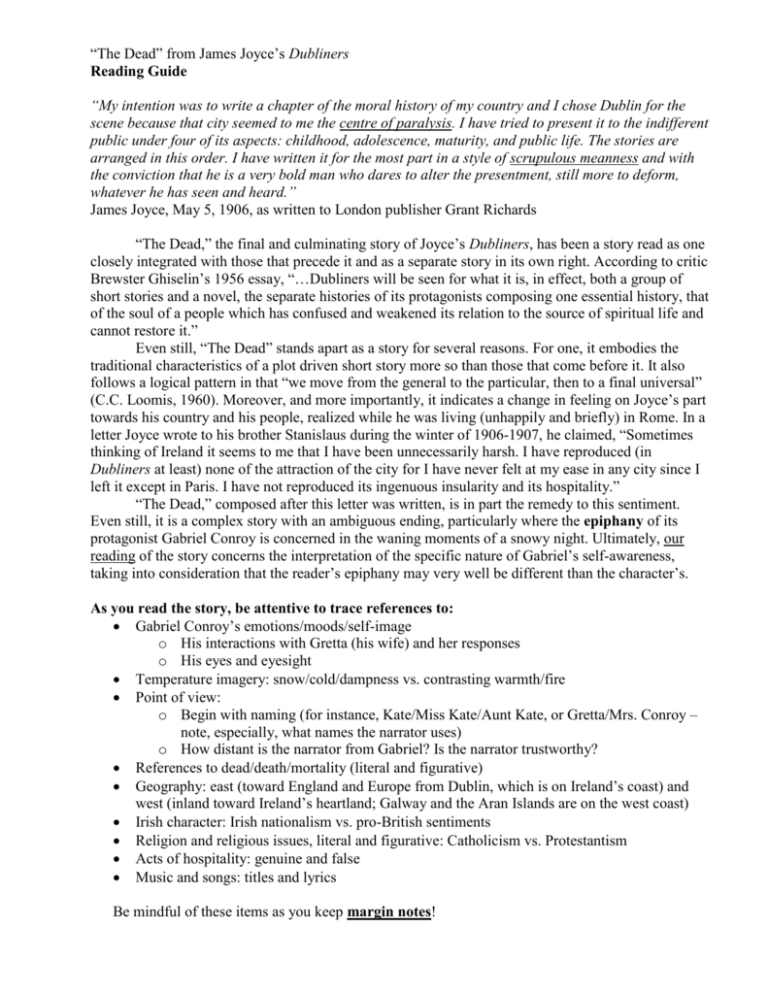
“The Dead” from James Joyce’s Dubliners Reading Guide “My intention was to write a chapter of the moral history of my country and I chose Dublin for the scene because that city seemed to me the centre of paralysis. I have tried to present it to the indifferent public under four of its aspects: childhood, adolescence, maturity, and public life. The stories are arranged in this order. I have written it for the most part in a style of scrupulous meanness and with the conviction that he is a very bold man who dares to alter the presentment, still more to deform, whatever he has seen and heard.” James Joyce, May 5, 1906, as written to London publisher Grant Richards “The Dead,” the final and culminating story of Joyce’s Dubliners, has been a story read as one closely integrated with those that precede it and as a separate story in its own right. According to critic Brewster Ghiselin’s 1956 essay, “…Dubliners will be seen for what it is, in effect, both a group of short stories and a novel, the separate histories of its protagonists composing one essential history, that of the soul of a people which has confused and weakened its relation to the source of spiritual life and cannot restore it.” Even still, “The Dead” stands apart as a story for several reasons. For one, it embodies the traditional characteristics of a plot driven short story more so than those that come before it. It also follows a logical pattern in that “we move from the general to the particular, then to a final universal” (C.C. Loomis, 1960). Moreover, and more importantly, it indicates a change in feeling on Joyce’s part towards his country and his people, realized while he was living (unhappily and briefly) in Rome. In a letter Joyce wrote to his brother Stanislaus during the winter of 1906-1907, he claimed, “Sometimes thinking of Ireland it seems to me that I have been unnecessarily harsh. I have reproduced (in Dubliners at least) none of the attraction of the city for I have never felt at my ease in any city since I left it except in Paris. I have not reproduced its ingenuous insularity and its hospitality.” “The Dead,” composed after this letter was written, is in part the remedy to this sentiment. Even still, it is a complex story with an ambiguous ending, particularly where the epiphany of its protagonist Gabriel Conroy is concerned in the waning moments of a snowy night. Ultimately, our reading of the story concerns the interpretation of the specific nature of Gabriel’s self-awareness, taking into consideration that the reader’s epiphany may very well be different than the character’s. As you read the story, be attentive to trace references to: Gabriel Conroy’s emotions/moods/self-image o His interactions with Gretta (his wife) and her responses o His eyes and eyesight Temperature imagery: snow/cold/dampness vs. contrasting warmth/fire Point of view: o Begin with naming (for instance, Kate/Miss Kate/Aunt Kate, or Gretta/Mrs. Conroy – note, especially, what names the narrator uses) o How distant is the narrator from Gabriel? Is the narrator trustworthy? References to dead/death/mortality (literal and figurative) Geography: east (toward England and Europe from Dublin, which is on Ireland’s coast) and west (inland toward Ireland’s heartland; Galway and the Aran Islands are on the west coast) Irish character: Irish nationalism vs. pro-British sentiments Religion and religious issues, literal and figurative: Catholicism vs. Protestantism Acts of hospitality: genuine and false Music and songs: titles and lyrics Be mindful of these items as you keep margin notes!
